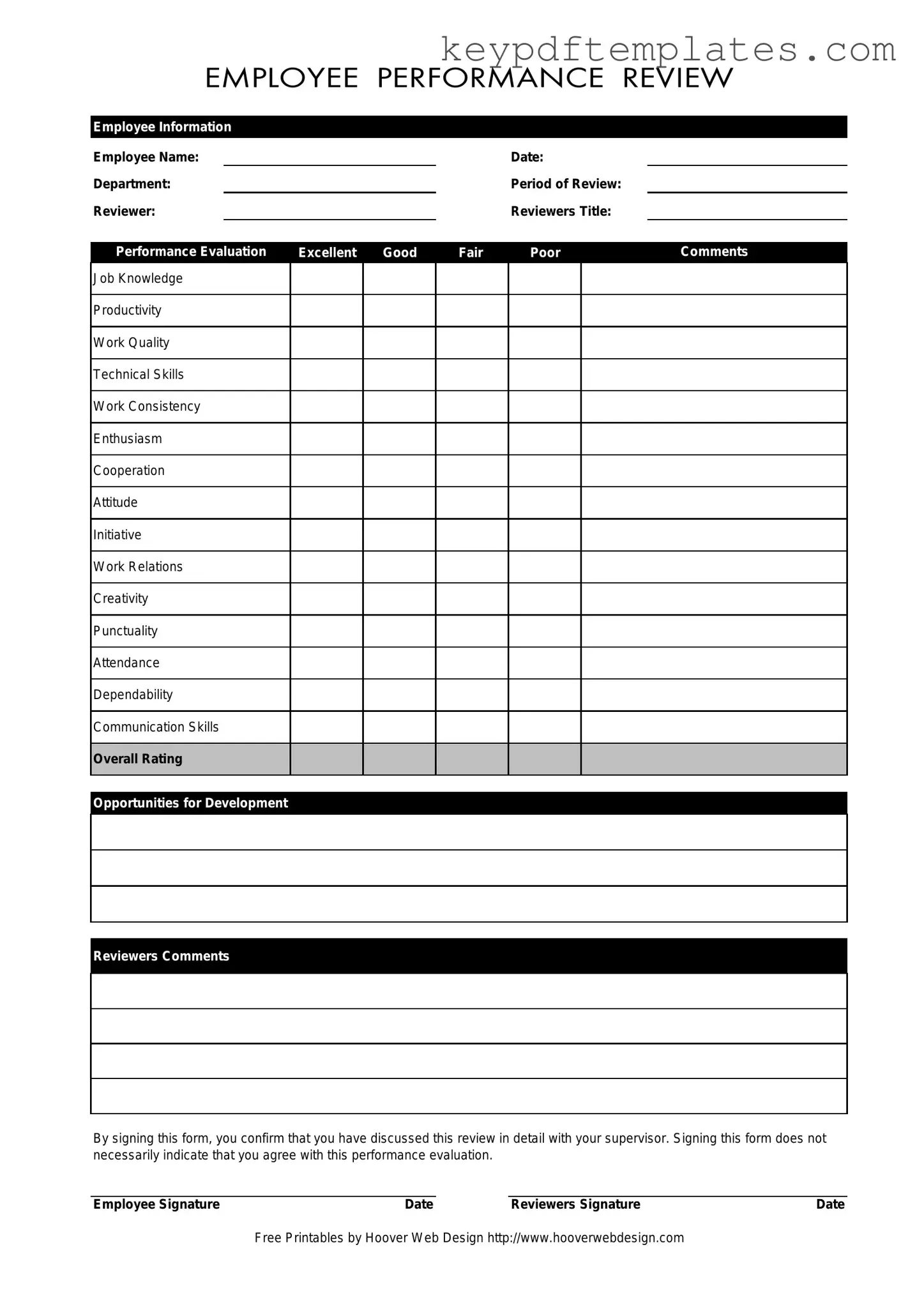Get Employee Form
The Employee form is a document used to evaluate an employee's performance over a specific review period. It includes sections for personal information, performance ratings across various skills, and space for comments from both the reviewer and the employee. This form serves as a tool for communication between employees and supervisors regarding job performance and areas for development.
Modify Document Online
